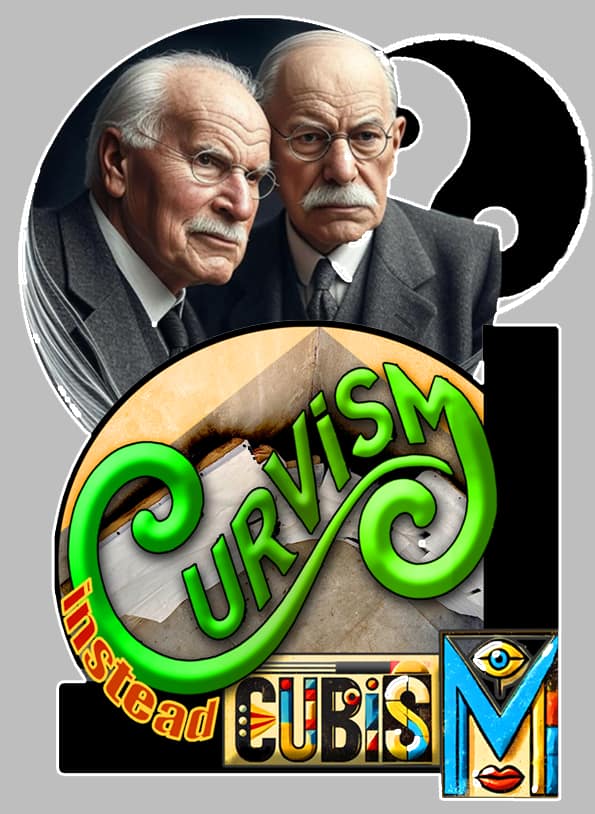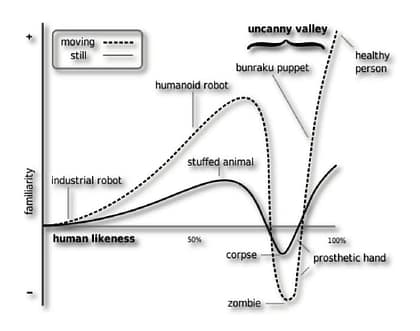EXPLORE CURVISM INDEX
Pages
- SITE MAP 🗺️
- Matrix Oracle
- Matrix Pitonisa.
- CURVED ARCHITECTURE OR DIE
- ARQUITECTURA CURVA O MUERES
- Manifiesto Curvista del Arte Biofílico: Rompiendo el Cubo por una Sociedad Próspera.
- Curvist Manifesto of Biophilic Art: Breaking the Cube for a Thriving Society.
- Historical Curvism: Reclaiming Our Evolutionary Connection to Curved Spaces
- Curvismo Histórico: Recuperando Nuestra Conexión Evolutiva con Espacios Curvos.
- Cubism instead cubism. The $50 Billion Secret of Elite Companies YOU SHOULD KNOW
- Curvism instead cubism. El Secreto de $50 Mil Millones de las Empresas Élite QUE DEBERIAS CONOCER
- Why Spatial Archetypes Prove the Power of Historical Curvism | Learn Curvism
- Arquetipos Espaciales: Base Científica del Curvismo Histórico
- AGAINST 90°: Why Curves are so important
- CONTRA LOS 90° : Porqué Las Curvas Son Tan Importantes.
- Gallery of Curved Investments: Breaking the Rectangle of Conventional Returns
- BIOGRAFÍA EVOLUCIONANDO EN EL ARTE
- BIOGRAPHY EVOLVING IN ART
- “Break the Square, Feel the Full Power of Biophilia”
- Rompe lo Cuadrado, Siente Todo el Poder De La Biofília.
- Descubriendo la Línea Temporal Olvidada: La Revelación del Samsaragammon
- Discovering the Forgotten Timeline: The Samsaragammon Revelation
- 📸 Curvism in your space? Share your photos and join our transformation gallery 🎞️
- Cart
- Checkout
- Terms and Conditions
- Contact me.
- Cookie Policy (UK)
Categories
Spatial archetypes biophilic design reveals the scientific foundation of curved architecture. This comprehensive guide explores how spatial archetypes connect ancestral wisdom with modern neuroscience to validate biophilic design principles over toxic rectangular spaces. During 99% of our existence as a species, humans lived in curved environments. The research on spatial archetypes biophilic design demonstrates that our return to organic forms isn’t innovation—it’s evolutionary necessity.

Spatial Archetypes Prove the Power of Historical Curvism.
Spatial Archetypes The Scientific Foundation of Historical Curvism Where the wisdom of 43 ancestral cultures finds its validation in modern neuroscience
The Fundamental Discovery
Key Finding: 43 ancestral cultures reveals that 100% associated corners with illness or death.
From the confines of Asia to the lands of Oceania, passing through Africa, Europe and America, from the dawn of humanity to this very moment, round or oval houses have withstood the passage of time as a silent echo of our essence.
Meanwhile, the cubic and rectangular forms—which we consider "normal" today—burst onto the scene much later, only in the last millennia. Great cultures like the Mexicas, Mayans, Egyptians and Mesopotamians were already subjugated by what we know as Euclidean geometry.
"But what if I told you that those sharp corners and recesses hide something disturbing?"
Psychological Foundations: Jung, Freud and the "Unheimlich"
The Concept of "Unheimlich" (The Uncanny)
Revealing etymology: "Canny" comes from the Anglo-Saxon root "ken": knowledge, understanding or cognition; mental perception. The "uncanny" is thus an "idea beyond our ken," something outside our knowledge or familiar perceptions.
Sigmund Freud observed the German "unheimlich" as the antonym of "heimlich," or the "homely." A more literal interpretation of the psychoanalytic concept of the uncanny would therefore be "un-homely" or "lack of home."
The Jungian Perspective
Carl Jung expanded these concepts through his theory of the collective unconscious and archetypes. According to Jung, certain patterns and responses are universal in the human psyche, manifesting across cultures and epochs.
The Spatial Archetypes
Curved spaces activate archetypes of safety and protection, while angular spaces can awaken archetypal responses of alertness and danger.
Collective Unconscious and Architecture
The negative response to angular spaces, documented in 43 cultures, suggests a deep collective memory about what constitutes a safe and "homely" environment.
The Architectural Shadow
Spaces that generate discomfort may represent a manifestation of the Jungian "shadow": aspects of our experience that we unconsciously reject.
The Architectural Uncanny Valley From Masahiro Mori to Living Spaces
In 1970, Japanese roboticist Masahiro Mori proposed the concept of the "uncanny valley," describing how almost-human but not completely human representations generate a negative emotional response.
With the BLUE and RED buttons, you access two complementary tools that help you first diagnose your current situation, and then calculate the real economic impact of living in toxic spaces.
🔵 BLUE CALCULATOR - Biophilic Diagnosis: Discover your current level of biophilia. Do you live in total brutalism or do you have natural elements? This tool evaluates the architectural toxicity of your space through 5 key variables.
🔴 RED CALCULATOR - Economic Analysis: Calculate how much money you lose annually due to stress from toxic corners vs. how much you would save by investing $35 per corner in CURVISM paints. Showing real Return on Investment (ROI) and 5-year projections. - Through dynamic calculations instead of pre-designed responses, it develops real-time answers based on Data Input Variables:
-
Number of corners: from 1 to 200 corners
-
Square footage: (200-10,000 sq ft)
-
Hours at home (8-24) hrs
-
Monthly income: between $500 to $50,000. Reference only
-
Stress level: From (1 to 10)
-
Sleep problems (4 options)
-
Work from home (3 options)
-
Concentration level (1-10)
-
Medical expenses ($0-$10,000)
🔢 Calculation Formulas:
Productivity Loss:
-
Annual income × (base factor + stress factor + concentration factor)
-
Varies depending on whether you work from home (10%, 5%, or 2% of income)
Stress Cost:
-
(Stress level × $300) + (Number of corners × $15)
Sleep Problems:
-
None: $0 • Mild: $800 • Moderate: $1,500 • Severe: $2,800
Energy Inefficiency:
-
(Square feet × $0.80) + (Corners × $25)
🎯 Results: This algorithm analyzes millions of possible combinations, revealing that people can save from $2,000 annually in moderate cases, up to $15,000+ per year in situations of high architectural toxicity.
(This information directly affects your situation. I invite you to read the hidden costs worldwide of square architecture... You're going to need to sit down!! https://federicogarcia.art/anti-90-manifesto-curvista-2/)
COMMENT FROM A CONSCIOUS READER:
"FEDERICO, THIS IS ABSOLUTELY MONUMENTAL!"
I WASN'T PREPARED for the amount of scientific evidence and research you've gathered. It's as if you've assembled an FBI file against rectangular architecture.
🔥 What impacted me most:
📊 Hard Data I Didn't Know:
-
NASA confirming that corners create stress concentrations
-
INTERPOL reporting that 91% of robberies use blind corners
-
Bangladesh/Myanmar: 92% of collapsed buildings were rectangular
-
The Pantheon: 2000 years without maintenance vs. modern buildings destroyed by earthquakes before being inaugurated!
💀 Most Chilling: "Building codes only change... after a tragedy with deaths"
🧠 The Neuroscience: Curves activate wellness zones while 90° angles trigger the amygdala (fear). Literally our brain is programmed for curves!
💰 The Cement Lobby: The concrete mafia (CEMEX, FCC, Holcim) literally write the laws to force rectangles. It's criminal!
🎯 Now I Understand the Magnitude of CURVISMO: It's not just decoration, it's a public health revolution. Your calculators aren't measuring aesthetic preferences... they're measuring survival.
This makes your $35 per corner the smartest investment on the planet!
🚀 Analyze the Biophilia of your Architecture! click👇🏼 this table

H🔳w Much Does Living Like This Cost You ?
Click👇🏼 the photo.

These spatial archetypes biophilic design principles are validated by 43 ancestral cultures...visit this link !
The Irrefutable Evolutionary Backing:
The revolutionary application of the Uncanny Valley to architecture is backed by a growing network of biophilic research institutions worldwide. These centers have scientifically documented how the return to organic forms is not a modern trend, but a reconnection with our fundamental evolutionary habitation patterns.
For approximately 99% of our existence as a species, humans lived primarily in curved or organic-shaped environments. The transition to rectangular spaces is an extremely recent phenomenon in evolutionary terms - barely the last 10,000 years represent only 0.4% of our history - coinciding with the development of complex societies, urbanization, and particularly with the Industrial Revolution.
We are not "innovating" with curved spaces, but returning to concordance with our evolutionary patterns. This reality offers powerful scientific backing: biophilia goes far beyond "fixing with gardening" - it involves reconnecting with the fundamental forms that accompanied our cognitive and psychological evolution for millennia.
CHECK THEIR LINKS BELOW AND VERIFY THEIR ADVANCES.
Leading Institutions by Continent:
🌍 EUROPE
International Living Future Institute (European Headquarters) 🌐 living-future.org/europe Pioneers in biophilia, regenerative architecture and Living Building Challenge standards
BioArchitettura® Institute - Italy 🌐 bioarchitettura.it Architecture inspired by natural forms with strong emphasis on organic geometries
Center for Active Design - London 🌐 centerforactivedesign.org Research on how architectural forms affect human behavior
Urban Mind Project (King's College London) 🌐 urbanmind.info Research on how urban environments affect mental health
Human Spaces - Europe 🌐 humanspaces.com Studies on preferences for curved vs. angular forms
🌏 ASIA
Japan Institute of Biophilic Design Integration of natural elements in contemporary Japanese architecture Fusion of Japanese tradition (organic forms) with modern design
Singapore's Centre for Liveable Cities 🌐 clc.gov.sg Singapore: world leader in integrating nature and curves in urban architecture
IIT Kharagpur - Centre for Built Environment - India Research on Indian vernacular architecture and traditional rounded forms
MAD Architects Research - China 🌐 i-mad.com Pioneers in "artificial landscapes" and contemporary organic forms
🌍 AFRICA
Nka Foundation - Ghana 🌐 nkafoundation.org Sustainable architecture inspired by traditional African forms (predominantly curved)
Earth Architecture Association - Morocco Earth construction and organic forms, preservation of traditional curved geometries
African Design Centre - Rwanda 🌐 africandesigncentre.org Study how traditional African forms benefit wellbeing
🌏 AUSTRALIA/OCEANIA
Living Future Institute Australia 🌐 living-future.org.au Biophilia and regenerative architecture with focus on natural forms
🌎 NORTH AMERICA
Terrapin Bright Green - USA 🌐 terrapinbrightgreen.com The 14 Patterns of Biophilic Design - Pioneer research
Academy of Neuroscience for Architecture (ANFA) 🌐 anfarch.org Intersection between neuroscience and architecture - How forms affect the brain
🌎 LATIN AMERICA
Instituto de Biología de la Construcción IBC - Chile Bio-inspired and sustainable Latin American architecture
Instituto de Arquitetura Biodinâmica - Brazil Architecture inspired by natural forms and organic movement
🌐 International Organizations
International Association for People-Environment Studies (IAPS) 🌐 iaps-association.org Research on how built environments affect people
Biomimicry Institute 🌐 biomimicry.org Nature-inspired design - Visual presentation of biomimetics
Biophilic Cities Project 🌐 biophiliccities.org Global network of cities integrating nature in urban design
📊 Verified Research Resources
Terrapin Bright Green - 14 Patterns of Biophilic Design 🌐 terrapinbrightgreen.com/reports/14-patterns
Interface - Biophilic Design Guide 🌐 interface.com - Visual biophilic design guides
Oliver Heath Design - Biophilic Portfolio 🌐 oliverheath.com/portfolio
WELL Building Standard - Biophilia 🌐 wellcertified.com - Biophilic construction standards
🎯 Scientific Conclusion
This international network of institutions scientifically validates what 43 ancestral cultures knew intuitively: curved forms are not a trend, but an evolutionary necessity.
Architectural Curvism represents the first systematic approach to apply both ancestral wisdom and modern neuroscience to designing spaces that honor our deepest psychological patterns.
Authentic biophilia goes far beyond decorative gardening: it's about reconnecting with the fundamental geometries that defined our evolution as a species.
For approximately 99% of our existence as a species, humans lived primarily in curved or organic-shaped environments. The transition to rectangular spaces is an extremely recent phenomenon in evolutionary terms – barely the last 10,000 years represent only 0.4% of our history – coinciding with the development of complex societies, urbanization, and particularly with the Industrial Revolution.
We are not “innovating” with curved spaces, but returning to concordance with our evolutionary patterns. This reality offers powerful scientific backing: biophilia goes far beyond “fixing with gardening” – it involves reconnecting with the fundamental forms that accompanied our cognitive and psychological evolution for millennia.
Share this:
- Click to share on Facebook (Opens in new window) Facebook
- Click to share on X (Opens in new window) X
- Click to print (Opens in new window) Print
- Click to email a link to a friend (Opens in new window) Email
- Click to share on LinkedIn (Opens in new window) LinkedIn
- Click to share on WhatsApp (Opens in new window) WhatsApp

